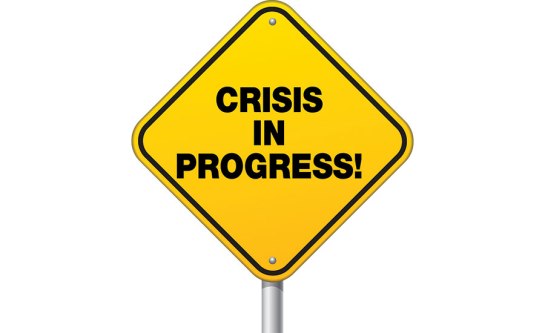Cultivating Code
Creating an effective software development environment requires more than technical skills or product roadmaps. As developers and development leaders, our roles encompass a broad range of responsibilities. The following sections delve into these multifaceted aspects – aspects that contribute to an environment where software development – and software developers – will flourish.
The Distinction
Developing software and leading its development are fundamentally different. While the former focuses on the practicalities of building solutions, the latter revolves around creating a conducive environment for such work to take place.
But what makes for an environment particularly well suited to software development? Let’s dive in.
Fostering Communication
As developers, we often delve deep into code, sometimes forgetting the world outside – sharing ideas, discussing problems and collaborating on solutions. But communication is the linchpin that holds everything together. In a leadership role, we must create an atmosphere where communication is fluid, open, and encouraged. This includes not only daily stand-ups or periodic meetings but also an open-door policy where team members feel they can approach us with their ideas or concerns. We set the tone, the language, and the pace for how communication happens.
Autonomy and Responsibility
Developers perform best when given the freedom to make decisions related to their tasks. They need autonomy to implement creative solutions. Responsibility accompanies this autonomy; it drives developers to perform their best, knowing that their decisions have an impact.
One of the core drivers for any developer is the freedom to solve problems in unique ways. As development leaders, we should ensure that our teams have the autonomy they need to make decisions about the code they write, the solutions they design, the tools to use, the way the work works, and even the technologies they wish to implement. But with great freedom comes great responsibility. Our role is to instil a sense of mission or purpose – the organising intent – that complements this autonomy. We need our team members to lean in to and own their decisions, fully, leading to a greater commitment to quality.
Note: Organising Intent refers to a clearly articulated objective or vision that guides the actions and decisions within a software development team. A clearly stated organising Intent provides team members with the ‘why’ behind their tasks. By understanding the broader goals and implications, team members are better equipped to make autonomous decisions that align with the overarching aims of the organisation. This intent serves as a unifying principle, enabling more effective coordination and fostering a shared sense of purpose.
Emotional Well-being
It’s essential for developers to feel mentally and emotionally supported. An environment that actively addresses burnout, stress and provides a good work-life balance contributes to better productivity and job satisfaction.
Work isn’t just about ticking off tasks from a to-do list; it’s also about the emotional and mental state of the team. As leaders, it behooves us to create a supportive environment that acknowledges the human aspects of work. From attending to folks’ needs, through acknowledging achievements, however small, to actively addressing burnout and stress, we have to consider emotional well-being as an integral part of the development process.
Continuous Learning and Cognitive Functioning
As developers, we understand that learning doesn’t stop once we leave the classroom; it’s an ongoing process essential for staying relevant. As development leaders, fostering a culture of continuous learning is a two-fold task. On one hand, it involves providing opportunities for skill enhancement. On the other, it requires an understanding of cognitive functioning, ensuring that our teams can absorb new knowledge under optimal conditions.
Cognitive dissonance, the psychological stress experienced when confronted with new information that conflicts with existing beliefs, can be a powerful motivator for growth. Rather than shying away from this discomfort, we can use it as a tool to encourage team members to re-examine old ways of thinking and adopt new, more effective methods.
The human brain operates best under specific conditions. Too much stress, for example, can trigger amygdala hijacks, where the emotional part of the brain interferes with rational thinking. Such episodes can halt learning and creativity dead in their tracks. As leaders, recognising the signs of stress and understanding how to defuse it are vital for creating an environment conducive to cognitive functioning and, by extension, continuous learning.
Our role, then, extends beyond merely finding resources. We must also cultivate an environment that encourages personal growth, helping our team members navigate the tricky psychological landscape that comes with collaborative knowledge work. In this way, we create a fertile ground not just for learning new technologies or ways of working, but for fundamental personal and emotional growth.
Feedback Loops
Regular feedback is essential for both the product and the team. Leaders might choose to establish short feedback loops with customers and among team members, allowing for agile adjustments and quicker improvements.
Feedback is the compass that guides development. As developers, we often look for immediate feedback from our code compilers or debugging tools. But as leaders, we establish feedback mechanisms that encompass not just the product but also the team, and all the Folks That Matter™. Regular team reviews, client feedback, and even self-assessments are tools we can use to ensure we’re always moving in the right direction.
Summary
Leading software development isn’t about barking orders from an ivory tower. It’s about cultivating a field where the seeds of software development can grow into robust solutions which meet folks’ needs.
Being at the helm of software development is not about mere management, nor even simple leadership. It’s an act of cultivation. As development leaders, we’re gardeners tending to our social gardens, providing them with the right soil, the right amount of light, and the essential nutrients they need to grow and flourish. From facilitating open communication to caring for the emotional well-being of our team, our actions set the stage for creating effective, sustainable software solutions.








